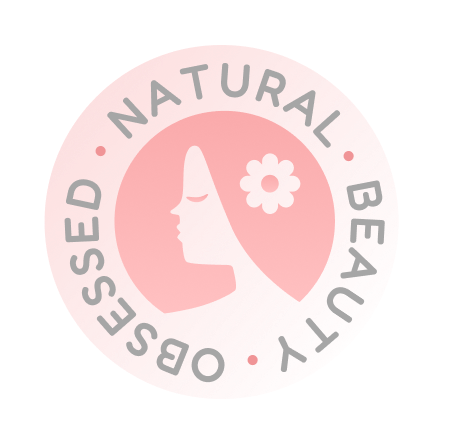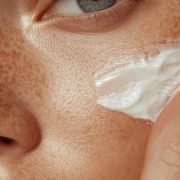Concealer can be your best friend or your biggest makeup mistake—especially if it’s creasing, caking, or making you look older. This guide breaks down common concealer mistakes and how to fix them for a smooth, bright, and natural-looking finish.
Posted on June 2, 2025 Written by: 100% PURE®

Introduction
Concealer can be your best friend or your biggest makeup mistake—especially if it’s creasing, caking, or making you look older. This guide breaks down common concealer mistakes and how to fix them for a smooth, bright, and natural-looking finish.
If your concealer seems to highlight everything you’re trying to hide—like fine lines, dark circles, or uneven texture—you’re definitely not alone. Despite being a staple in most makeup bags, concealer remains one of the most misunderstood products in any routine. Used correctly, it can brighten, lift, and perfect. Used wrong, it can do the exact opposite.
In this guide, we’ll demystify the role of concealer, explain how it actually differs from foundation (spoiler: they’re not interchangeable), and give you clear, easy-to-follow tips to avoid common mistakes. You’ll also learn how products like primer and the right makeup sponge can make all the difference—especially for mature or sensitive skin types. Whether you’re 22 or 62, this is how to make concealer work for you, not against you.
Concealer vs. Foundation: What’s the Difference?
It’s easy to confuse concealer with foundation—especially when they seem to do similar things. But they each serve a unique purpose, and understanding the difference can make or break your makeup application.
Purpose & Coverage
Foundation is meant to even out your overall skin tone and provide a smooth base. Concealer is your spot-treatment specialist—it targets specific problem areas like dark circles, blemishes, or redness with more concentrated pigment.
Formulation Differences
Because concealers are built for precision, they tend to be thicker and more pigmented than foundation. Foundations like the offer a serum-like, breathable layer of coverage that looks natural while evening out tone. For those who want more dramatic coverage, the delivers a satin-matte finish with long-lasting wear—but it still shouldn’t replace your concealer for spot correction.
When to Use Each
Always start with your foundation. Not only does this reduce the amount of concealer you’ll need, but it also ensures a more seamless finish. Going in with concealer first often leads to over-application, which increases the risk of creasing and caking.
Pro Insight
Makeup artists and dermatologists alike agree: applying concealer after foundation helps avoid product buildup, especially around the eyes and nose. It gives you more control—and a more natural result.

The Most Common Concealer Mistakes (and How to Fix Them)
1. Using Too Much Product
- Less is more: Over-applying causes creasing and texture
- Instead, use a pinpoint method—build slowly only where needed
2. Skipping Primer
- Primer helps smooth texture and prevent product from settling into fine lines
- Use a hydrating primer under the eyes to create a smoother surface
Product Mentions:
- (for dry or mature skin)
- (for oily or textured areas)
3. Using the Wrong Shade
- Too light emphasizes puffiness or creates ashy tones
- Choose a shade close to your foundation or with a peach undertone to correct darkness
4. Not Setting Properly
- Failing to set concealer can cause slippage
- Over-setting with powder can cause creasing and dryness
- Use a fine brush or damp with minimal talc-free powder
5. Applying in the Wrong Places
- Applying thick layers directly in lines or crow’s feet enhances them
- Focus on inner corners, pigmentation, and areas that actually need brightening
Even the best concealer can work against you if it’s not applied strategically. Here are the top five concealer missteps—and how to correct them for a smooth, long-lasting finish.
1. Using Too Much Product
The Mistake: Over-applying concealer, especially under the eyes, is the fastest way to get creasing, cakiness, and visible texture.
The Fix: Use a pinpoint method—dab small amounts only where needed and blend well before adding more. Less is always more when it comes to delicate areas like the under-eyes.
2. Skipping Primer
The Mistake: Going straight in with concealer on bare or uneven skin can lead to patchiness and product settling.
The Fix: Use a targeted primer to create a smoother surface. For dry or mature skin, try our to add hydration and glow. For oily or textured areas, the helps reduce shine and grip makeup longer.
3. Using the Wrong Shade
The Mistake: Choosing a concealer that’s too light can backfire—especially under the eyes, where it can emphasize puffiness or turn ashy.
The Fix: Opt for a shade close to your foundation, or go for a peach or salmon undertone if you’re correcting dark circles. This neutralizes the discoloration without washing you out.
4. Not Setting Properly
The Mistake: Either skipping powder entirely or over-powdering can sabotage your concealer. No setting = slippage. Too much powder = dryness and creasing.
The Fix: Use a light touch. Tap a minimal amount of talc-free powder into place with a soft brush or a damp to lock in coverage without settling into lines.
5. Applying in the Wrong Places
The Mistake: Slathering concealer all over the under-eye area or directly into crow’s feet highlights texture rather than hiding it.
The Fix: Focus your application where it matters most—usually the inner corners, pigmentation, and just below the darkest part of the under-eye. Blend outward rather than upward into fine lines.
How to Apply Concealer Correctly for a Seamless Finish
If your concealer tends to crease, settle, or look heavy, refining your technique can make all the difference. Here’s a step-by-step guide to achieving smooth, natural-looking coverage that lasts.
Prep: Hydration Is Key
Dryness under the eyes is a major cause of patchy or cakey concealer.
- Apply a lightweight eye cream or moisturizer 5–10 minutes before applying concealer.
- Give your skincare time to fully absorb before moving on to primer.
Prime Your Skin
Priming helps your concealer grip better and prevents it from settling into fine lines.
- Use Luminous Primer on dry, mature, or dull skin to create a smooth, hydrated base.
- Use Mattifying Primer on oil-prone or textured areas for better hold and a soft-focus finish.
Use the Right Tools
Application tools can impact how your concealer blends and wears.
- Fingers are great for quick blending in small areas because the warmth helps melt the product into the skin.
- A damp Non Latex Makeup Blender gives a seamless blend and helps absorb excess product for a more natural finish.
Apply Strategically
Where and how you apply concealer is just as important as the product itself.
- Always apply concealer after foundation to avoid overusing it.
- Use the “triangle of light” technique under the eyes, placing the product in a triangle shape from the inner corner to the outer corner and down onto the upper cheek.
- Blend the concealer outward and upward to brighten and subtly lift the face.
Recommended Concealers
- For full coverage and long wear:
- For a lighter, more breathable finish:

The Best Concealer-Foundation Pairings for Mature Skin
Best for dry or mature skin:
- Pair 2nd Skin Concealer with 2nd Skin Foundation for a light, breathable feel
- Add Luminous Primer for glow and hydration
Best for dull or tired skin:
- Use under concealer to add a brightening, diffused glow
- Dab on cheekbones and inner corners for radiance
Best for full coverage without heaviness:
- Use Full Coverage Water Foundation with Long Last Concealer for events or long days
- Blend well with Non-Latex Makeup Blender
As skin matures, it benefits from lightweight, hydrating formulas that enhance radiance without settling into fine lines. These concealer-foundation pairings are designed to support smoother application, long-lasting wear, and a natural finish.
Best for Dry or Mature Skin
- Pair Fruit Pigmented® 2nd Skin Concealer with Fruit Pigmented® 2nd Skin Foundation
- This duo offers a breathable, serum-like texture that moves with the skin instead of sitting on top of it
- Prep with Luminous Primer to add hydration and a subtle glow
Best for Dull or Tired Skin
- Use Luminating Crème under your concealer for an all-over brightening effect
- Tap a small amount onto the cheekbones and inner corners of the eyes to reflect light and create a soft-focus finish
- Layer concealer on top only where needed for a radiant, refreshed look
Best for Full Coverage Without Heaviness
- Combine Fruit Pigmented® Full Coverage Water Foundation with Long Last Concealer with Super Fruits
- This pairing offers serious staying power for events, photos, or long workdays
- Blend both with a damp Non Latex Makeup Blender for smooth, even coverage without heaviness
Pro Tips to Prevent Creasing, Caking, or Aging the Eye Area
Skip foundation under the eyes. Use concealer alone in this delicate area to avoid extra product buildup that can crease or cake.
Apply a minimal amount of concealer and blend immediately. Don’t let the product sit too long before blending, as this increases the chance of settling into fine lines.
Always start with less product and build coverage gradually where needed, rather than applying too much at once.
Set only the areas prone to creasing, such as smile lines, using a small amount of talc-free setting powder applied with a fine brush or makeup sponge.
Refresh mid-day with a hydrating mist or gently tap leftover moisturizer over any creased areas to smooth and plump the skin without disturbing your makeup.
Conclusion
If your concealer has been disappointing, the solution isn’t always a new product—it’s the technique. By choosing the right shade, applying it strategically, and supporting it with the proper primer and foundation, concealer can brighten, lift, and smooth your skin without creasing or caking. The key is to work with your skin’s natural texture and needs, not against them.
FAQ
1. Should I apply concealer or foundation first?
Apply foundation first to even out your skin tone and reduce the amount of concealer needed. This helps prevent over-application and creasing.
2. What does primer do under concealer?
Primer creates a smooth, hydrated base that helps concealer adhere better, prevents it from settling into fine lines, and improves wear time.
3. What’s the best concealer technique for older women?
Use a light hand with thin layers, choose a shade close to your foundation, apply in a triangle shape under the eyes, and set sparingly with talc-free powder to avoid creasing and dryness.
4. Can I use concealer instead of foundation?
Concealer is designed for targeted coverage, so it’s best paired with foundation. Using concealer alone can lead to uneven coverage and texture issues.
5. How do I stop my concealer from creasing under my eyes?
Use minimal product, blend immediately, prep the skin with a hydrating primer, apply setting powder only where necessary, and refresh with a hydrating mist throughout the day.




